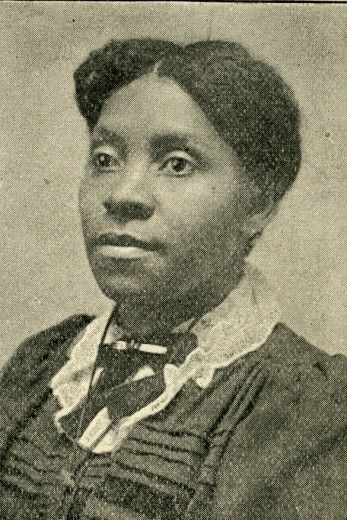
Sarah Rector: The Wealthiest 12 Year Old Black Girl in 1913
In 1913, Sarah Rector of Oklahoma became one of the wealthiest 12 year old black girls in the United States.
Sarah Rector was born in 1902 near the all-black town of Taft, located in the eastern portion of Oklahoma, which was considered Indian Territory. She was born to Rose McQueen and Joseph Rector (both born 1881) who were the grandchildren of slaves owned by the Creek Indians before the Civil War, and which became part of the Muscogee Creek Nation after the Treaty of 1866. They and their descendants were listed as freedmen on the Dawes Rolls, by which they were entitled to land allotments under the Treaty of 1866 made by the United States with the Five ‘Civilized’ Tribes. Consequently, nearly 600 black children, were granted land allotments, and Sarah Rector was allotted 159.14 acres (64 hectares). This was a mandatory step in the process of integration of the Indian Territory with Oklahoma Territory to form what is now the State of Oklahoma.
Wealth Creation Through Land & Oil
The parcel allotted to Sarah Rector was located in Glenpool, about 60 miles (97 km) from where she and her family lived. It was considered inferior infertile soil, not suitable for farming, with better land being reserved for white settlers and members of the tribe. To help cover the tax expense on the land, Joseph Rector her father leased Sarah’s parcel to the Standard Oil Company. In 1913, the independent oil driller B.B. Jones drilled a well on the property which produced a “gusher” that began to bring in 2,500 barrels (400 m3) of oil a day. Rector began to receive a daily income of $300 from this strike. The law at the time required full-blooded Indians, black adults, and children who were citizens of Indian Territory with significant property and money, to be assigned “well-respected” white guardians. Thus, as soon as Rector began to receive this windfall, there was pressure to change Rector’s guardianship from her parents to a local white resident named T.J. (or J.T.) Porter, an individual known to the family. Rector’s allotment subsequently became part of the Cushing-Drumright Oil Field. In October 1913, Rector received royalties of $11,567.
Given her wealth, in 1913 the Oklahoma Legislature tried to have her declared white, allowing Rector to reap the benefits of her elevated social standing, such as riding in a first-class car on the trains.
In 1914, an African American journal, The Chicago Defender, began to take an interest in Rector, just as rumors began to fly that she was a white immigrant who was being kept in poverty. The newspaper published an article claiming that her estate was being mismanaged by her family and that she was uneducated, and had a poor quality of life. This caused National African American leaders Booker T. Washington and W. E. B. Du Bois to become concerned about her welfare. In June of that year, a special agent for the National Association for the Advancement of Colored People (NAACP), James C. Waters Jr, sent a memo to Du Bois regarding her situation. Waters had been corresponding with the Bureau of Indian Affairs and the United States Children’s Bureau over concerns regarding the mismanagement of Rector’s estate. He wrote of her white financial guardian:
Is it not possible to have her cared for in a decent manner and by people of her own race, instead of by a member of a race which would deny her and her kind the treatment accorded a good yard dog?
This prompted Du Bois to establish the Children’s Department of the NAACP, which would investigate claims of white guardians who were suspected of depriving black children of their land and wealth. Washington also intervened to help the Rector family. In October of that year, she was enrolled in the Children’s School, a boarding school at the Tuskegee Institute in Alabama, headed by Washington. Upon graduation, she attended the Institute.
Rector was already a millionaire by the time she had turned 18 in 1920. She owned stocks, bonds, a boarding house, businesses, and a 2,000-acre piece of prime river bottomland. At that point, she left Tuskegee and, with her entire family, moved to Kansas City, Missouri. She purchased a house on 12th Street, known as the Rector House, which is currently owned by a local nonprofit, with the intention of restoration and historical and cultural preservation.
Soon after moving to Kansas City, when she was 17 or 18, she married local businessman Kenneth Campbell in 1920. The wedding was a very private affair with only her mother and Campbell’s paternal grandmother present. The couple had three sons before divorcing in 1930. In 1934, she married restaurant owner William Crawford.
Later life
Rector lived a comfortable life and, with a taste for fine clothing and cars, enjoyed her wealth. She threw lavish parties and entertained celebrities.


